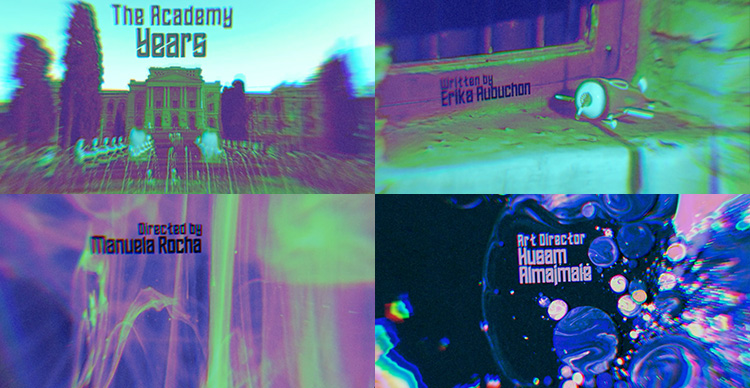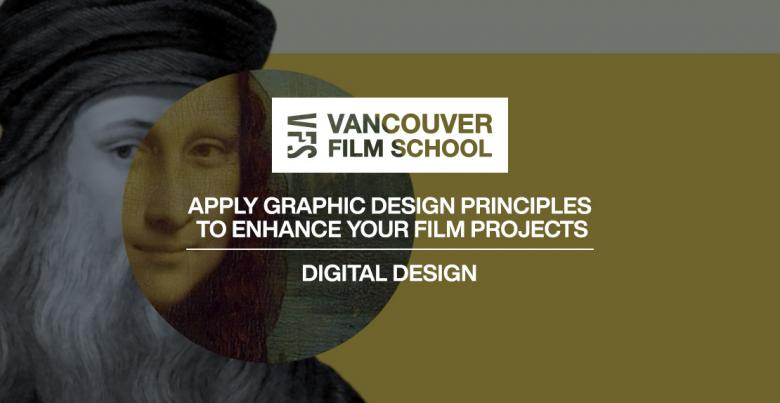Key Takeaways
- Color theory fundamentals significantly impact viewer emotions and can establish mood throughout your film production projects and visual narratives.
- Typography selection influences audience perception and requires careful consideration of readability, style, and contextual appropriateness for different writing for film, television and game projects
- Consistent visual branding throughout film projects increases professional quality and strengthens 3D animation and visual effects that resonate with audiences
Graphic design principles play a crucial role in elevating film and video projects from amateur to professional quality. Vancouver Film School teaches students how to integrate visual aesthetics with narrative storytelling across multiple disciplines. Through our comprehensive Digital Design program, Vancouver Film School equips future filmmakers with essential graphic design skills that enhance visual storytelling. Students learn to apply design principles that create cohesive, engaging, and visually stunning productions while developing their unique creative voice.
VANCOUVER FILM SCHOOL INTEGRATES COLOR THEORY ACROSS DIGITAL PROGRAMS
Color theory fundamentals form the backbone of visual storytelling in film and video projects, influencing audience emotions and driving narrative understanding. Professional color grading techniques transform ordinary footage into cinematic experiences by establishing mood, time period, location, and emotional context. Vancouver Film School teaches students to develop comprehensive cinematic color palettes that remain consistent throughout productions, ensuring visual harmony while supporting storytelling objectives with purposeful color choices that trigger specific emotional responses in viewers.
Color Grading Creates Emotional Impact in Narrative Storytelling
Industry standard software like DaVinci Resolve offers filmmakers powerful tools to establish distinctive visual moods through professional color correction workflows. Emotional color schemes in blockbuster movies demonstrate how specific combinations can evoke responses ranging from tension and fear to warmth and nostalgia through careful application of cinematic color theory principles. Students at Vancouver Film School's Film Production program learn to develop their visual style through color grading techniques that transform raw footage into cohesive visual narratives with consistent emotional tonality.
Essential Color Theory Principles for Filmmakers to Master
- Complementary colors create visual tension and can highlight key narrative elements in your frame composition.
- Analogous color schemes establish harmony and can convey peaceful or cohesive emotional states in your scenes.
- Monochromatic palettes focus viewer attention on form and texture rather than color variation.
- Color temperature affects perceived emotional distance, with warm tones feeling intimate and cool tones creating detachment.
- Saturation levels impact emotional intensity, with highly saturated colors conveying energy and desaturated palettes suggesting melancholy.
- Color contrast directs viewer attention to important visual elements within your composition.
- Consistent color grading throughout a project establishes visual continuity and professional quality.
EFFECTIVE TYPOGRAPH TRANSFORMS ORDINARY VIDESO INTO PROFESSIONAL CONTENT
Cinematic font selection significantly impacts how viewers receive information, establishing tone, historical context, and brand identity within film projects. Video typography principles guide filmmakers in creating legible, appropriate, and aesthetically pleasing text elements that enhance rather than distract from visual storytelling. Professional title sequences utilize thoughtful typography that balances visual hierarchy design with creative expression, ensuring that on-screen text reinforces narrative themes while maintaining readability across different viewing platforms and screen sizes.
Applying Graphic Design Principles to On-Screen Text Elements
Professional title sequences from leading filmmakers demonstrate how typography can establish tone and thematic elements before the story even begins through careful consideration of font pairings, animation, and placement. Documentary typography guidelines differ significantly from fiction film approaches, requiring greater clarity and informational hierarchy while still maintaining visual cohesion with the subject matter. Filmmakers must adapt platform-specific text design strategies that account for varying screen sizes and viewing conditions, ensuring that typographic contrast principles maintain legibility whether viewed on cinema screens, tablets, or smartphones.
 The work that Digital Design students create during their program is truly incredible.
The work that Digital Design students create during their program is truly incredible. DIGITAL DESIGN STUDENTS CREATE COMPELLING VISUAL HIERARCHIES IN FILMS
Visual attention direction techniques help filmmakers guide viewers through complex scenes, ensuring important narrative elements receive appropriate focus through thoughtful frame composition principles. Compositional balance techniques distribute visual weight across the frame to create aesthetically pleasing and emotionally appropriate arrangements that support storytelling objectives without feeling forced or artificial. Vancouver Film School's Digital Design program teaches students to utilize negative space effectively, recognizing that what's left out of a frame can be as important as what's included, creating breathing room that enhances focal points and improves overall cinematic design.
How Do Leading Cinematographers Structure Visual Information?
Professional cinematography techniques apply traditional visual composition fundamentals to moving images, adapting principles like the rule of thirds, leading lines, and framing to account for motion and temporal development. Aspect ratio considerations dramatically affect visual hierarchy in films, with wider formats generally emphasizing horizontal relationships while taller frames highlight vertical connections and power dynamics. Advanced professional-level lighting skills for film projects provide powerful viewer attention guidance tools, using contrast, color, and intensity to direct the eye precisely where the storyteller wants it to go within complex visual storytelling structures.
MOTION GRAPHICS ENHANCE STORYTELLING IN MODERN FILM PRODUCTION
Seamless graphics integration requires filmmakers to balance visual impact with narrative coherence, ensuring motion elements enhance rather than distract from storytelling objectives. Documentary motion design follows different aesthetic and ethical considerations than fiction film, prioritizing clarity, information accuracy, and appropriate visual styling that respects subject matter while still engaging viewers. Hollywood studios routinely employ sophisticated information visualization techniques to convey complex concepts efficiently, demonstrating how animation principles application can transform abstract ideas into accessible visual experiences through professional motion graphics and visual effects integration.
VFS Animation Students Master Transition Effects Between Scenes
Professional transition design goes far beyond simple cuts and dissolves to create meaningful connections between scenes through visual elements that maintain narrative continuity techniques. Subtle motion enhancement through carefully crafted temporal indication graphics can establish time passage, flashbacks, or dream sequences without relying on explicit text or dialogue. Vancouver Film School's Animation programs provides comprehensive training in visual storytelling transitions that seamlessly blend technical proficiency with creative expression, teaching students to select appropriate animation software for specific transition effects based on project requirements.
STORYBOARD TECHNIQUES TRANSFORM ABSTRACT CONCEPTS INTO VISUAL NARRATIVES
Independent film storyboarding balances detail with practical flexibility, providing sufficient visual communication techniques to guide production while allowing for creative discovery during filming. Professional directors use storyboards to translate directorial vision effectively to diverse production teams, ensuring everyone from cinematographers to production designers shares a common visual understanding. Vancouver Film School teaches narrative visualization methods that help emerging filmmakers develop comprehensive visual storytelling blueprints that anticipate technical challenges, plan complex sequences, and establish composition planning fundamentals before expensive production resources are committed.
Vancouver Film School Teaches Previsualization for Complex Sequences
Professional storyboarding software has revolutionized pre-production planning, allowing filmmakers to create sophisticated digital previsualization that goes far beyond traditional hand-drawn approaches. Major studios invest heavily in advanced studio production planning through comprehensive previsualization software that models camera movements, lighting effects, and even performance blocking before actors arrive on set. Students learning digital composition planning at Vancouver Film School gain practical experience with industry-standard visual sequence development tools that prepare them to work efficiently within contemporary production environments.
Vancouver Film School prepares students to excel in applying graphic design principles to film and video through hands-on training across multiple specialized programs. VFS instructors bring real-world industry experience that helps students understand how visual design choices impact audience engagement and narrative effectiveness. Graduates emerge with both theoretical knowledge and practical skills in game design and interactive media that allow them to create visually compelling and professionally polished productions.
